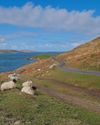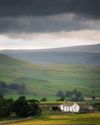
While canal-building has been around since Roman times, when the Fossdyke was built to connect Lincoln to the River Trent, it wasn't until the Industrial Revolution that it really took off in the UK. Burgeoning industry needed a better method of transporting goods and raw materials than by road, and canals offered the solution. A horse could tow up to 50 tons of cargo in a boat, connecting mines with factories and factories with cities. From 1759 to the end of the 18th century, there was a frenzy of canal building but it was to be short-lived as a competing form of transport the railways - took off by the middle of the 19th century. The profit in canal building disappeared and the waterways slowly fell out of use. It took nationalisation in 1947 to save the remnants of the canal network but, these days, it is mainly used for leisure activities rather than industry.
What, when and where to shoot canals and locks
Canals can be found in the countryside, complete with pleasant towpaths used for leisure pursuits, but their original purpose was industrial transportation, so they are present in cities, with buildings and artificial lighting as backdrops. There are also associated elements, such as bridges, docks or marinas for the boats, toll houses and, of course, locks - these feats of engineering enable the canal to climb over elevated stretches of terrain.
この記事は Digital Camera UK の October 2024 版に掲載されています。
7 日間の Magzter GOLD 無料トライアルを開始して、何千もの厳選されたプレミアム ストーリー、9,000 以上の雑誌や新聞にアクセスしてください。
すでに購読者です ? サインイン
この記事は Digital Camera UK の October 2024 版に掲載されています。
7 日間の Magzter GOLD 無料トライアルを開始して、何千もの厳選されたプレミアム ストーリー、9,000 以上の雑誌や新聞にアクセスしてください。
すでに購読者です? サインイン

David duChemin
The Canadian wildlife photographer gives Niall Hampton a flavour of his latest book Light, Space & Time, and his talk at The Photography Show

Scanning ahead...
In a make-or-break year for the camera market, Jon Devo suggests throwing out the playbook

Click, click, gone
Sean McCormack tries ON1 Photo RAW's new Generative Erase

Blur the background
Wendy Evans explains how to change the depth of field in telephoto shots using the Lens Blur tool in Lightroom or Camera Raw

Bring the drama with colour-grading tools
Discover how to use adjustment layers in Affinity Photo to add mood and colour to a lacklustre image, with Wendy Evans

Optimise your phone shots in Photoshop
Smartphones are our most useful cameras, so let's enhance our shots, says James Abbott

Expand your images
Crop outside your frame in Photoshop and discover a clever hack for detailed Al-generated fills with James Paterson

Shot of the month
Benjamin Yavar, winner of the Photography category of 2024's ViewSonic ColorPro Awards

CAMERA CLINIC - Master the art of modern photography
Architecture is a huge subject in photography.

HARNESS THE POWER OF RAW!
Take your captures to the next level with this 10-step tutorial for Adobe Lightroom Classic CC. Dan Mold is your expert guide...